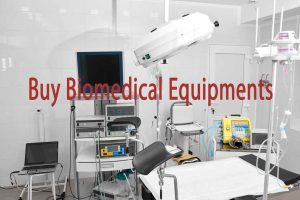Knowing when your fields are an optimal length for grazing is pivotal for champaign growers or drovers. Satellites may be the stylish way to get that information.
There’s a sweet spot of the lawn growing stage you want to hit in terms of timing for grazing. Soon, growers will be suitable to find that pivotal time with help from satellites.
A new in- app remote- seeing technology launching latterly this time in Ireland will allow growers to directly measure the height of lawn in their grazing paddocks from space. Satellite data will help Origin Digital’s service GrassMax in furnishing druggies precise information about their fields, which program authors hope will lead to increased productivity and profitability for growers.
The sweet spot for lawn is when it has picked three offshoots, called the three- splint stage, says Kieran Holden, champaign digital specialist at Origin Enterprises. This optimizes energy for the beast, which influences how important meat they produce, and has a huge impact on growers ’ profitability.
“ That’s when there’s an optimum quantum of energy in the lawn; it’s when there’s an optimum quantum of fiber in the lawn and there’s an optimum quantum of protein in the lawn, ” says Holden.
Measuring lawn has come a common tool for effective grazing gyration in places similar as Ireland, where lawn– fed dairy is a big assiduity. Strategies for measuring lawn range from the cut– and- weigh system to using plate measures to walking the field and taking stock of the lawn by eye. These styles help calculate the dry matter available, which gives growers an idea of how important feed is in the field.
Still, all of these styles take time. Walking your fields takes a many hours each time you do it, says Holden, and it can be inconsistent. Holden says this technology enables more effective use of coffers, serving to be more economically and environmentally sustainable.
In collaboration with Aspia Space, Origin Digital is using synthetic– orifice radar( SAR) satellite data to measure lawn. SAR is a remote seeing tool that creates an image using radio swells. For lawn– measuring purposes, this is preferable over camera imaging because it can overcome visual obstacles presented by rainfall.
“ Lots of lawn needs lots of rain, and where you have lots of rain, you have lots of shadows, and where you have lots of shadows, you have an issue with optic detectors, ” says Holden. The satellite data will work in confluence with other in- app technology similar as rainfall– grounded growth models to produce an accurate picture of lawn in a planter’s paddock.
ADS
Expanded access to satellite data means that a lot of diligence are chancing creative uses for it — especially when it comes to land operation. Data collected by satellites are now used to collude ghost timbers and understand changes in ocean– position rise. The National Park Service indeed uses satellite imagery to cover geography changes in some of its premises . Agriculture is no exception.
Last time, Planet and Organic Valley completed a airman program using satellite imagery to estimate pasturage health in service of regenerative rotational grazing. The US Department of Agriculture lately funded exploration using satellite data to estimate climate smart acclimations in husbandry, and the US Senate is considering a bill that would make perfection husbandry, a practice involving technology similar as satellites, available to further pastoral growers. Agriculture technology has grown hops and bounds over the last generation, says Holden.
“ We’ve a small ranch at home as well. My father originally started off furrowing with a steed, and then we’re talking about using satellite data to measure lawn at home. It’s amazing what happens in a short space of time. ”
ADS



